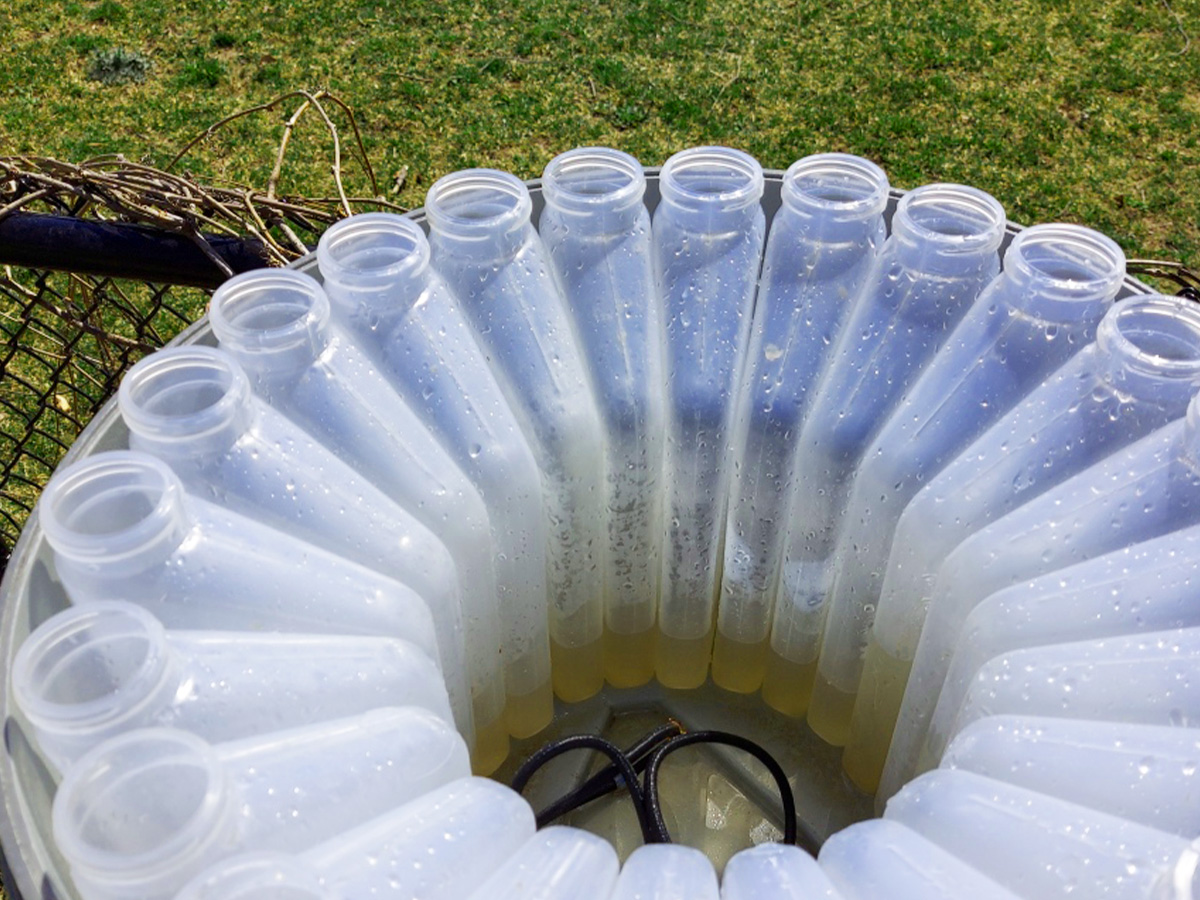Tracking COVID-19 in sewer systems

Professors Kimberley Gilbride and Claire Oswald are leading a Ryerson team in collecting and analyzing wastewater samples to detect the COVID-19 virus.
This story was updated on April 1, 2022.
Researchers from Ryerson are tapping into Toronto’s wastewater systems to alert public health officials to early warning signs of COVID-19 outbreaks and tracking infection trends, with the most recent results showing a low level of viral signal at a wastewater treatment plant and a gradual decline at other testing sites.
The work of geography professor Claire Oswald, biology professor Kimberley Gilbride and their team is part of an Ontario-wide collaborative effort to collect and test wastewater samples for SARS-CoV-2, the virus that causes COVID-19. Since fall 2020, the Ryerson researchers have scaled up their efforts from monthly testing at one of Toronto’s four wastewater treatment plants – confirming their methods could detect the viral genetic RNA molecules – to ongoing collection at 17 different sites multiple times a week. Those monitored sites include six different Toronto communities, along with facilities like hospitals, shelters and long-term care homes. Samples are then analyzed at professor Gilbride’s lab.
Their results in December 2021 detected a large spike in the viral signal found in the wastewater samples, with the trend in January showing a plateau and gradual decline. Professor Oswald said the most recent results in February show a low level of signal at the wastewater treatment plant monitored by their team and a gradual decline at the sites they check upstream of the plant. She cautioned that the trends do vary for different wastewater treatment plants and community sampling locations.
The community-based and wastewater treatment plant results are helpful in retrospectively confirming trends of COVID-19 infection. Toronto Public Health has recently started sharing the wastewater surveillance data collected at water treatment plants throughout the city online. (external link, opens in new window)
The facility-specific data can be applied more proactively to halt potential outbreaks, as a positive SARS-CoV-2 result from the wastewater samples could indicate someone who works at or lives in the building has COVID-19. “We’ve had one case study where we did see a positive in one of these facilities in August. We saw a positive on a Tuesday and we saw a positive on a Thursday. Toronto Public Health is actually working with us and they decided to go into the facility and start testing people,” said professor Gilbride. She says that in the following week, the researchers had seen a third positive – and Toronto Public Health had found someone who did have the virus – and close contact tracing found another four cases. In this instance, the testing and resulting isolations helped to prevent an outbreak.
The retrospective health data can be helpful for health authorities, notes professor Gilbride. They can take the data into account when planning strategy, such as hosting more pop-up vaccine clinics or testing sites in areas with higher rates of the virus.
Collaboration has played a key role in accelerating research that uses these methods for COVID-19 detection, including through the Ontario Wastewater Surveillance Initiative. “We meet regularly with other researchers across the province and country to compare methods and results. The collaboration has pushed the research forward at a fast rate,” said professor Oswald. These methods include everything from practical fieldwork tips to ensuring that labs are using the same controls for testing, notes professor Gilbride.
The Ryerson team is committed to continuing sampling and analysis until March 2023. Future applications of wastewater surveillance could include tracking other diseases, and the insights gained could provide key insights into population health. Professor Gilbride has proposed exploring if wastewater testing can be used to monitor for the annual influenza virus.
The COVID-19 wastewater surveillance project is supported by the Ryerson COVID-19 SRC Response Fund, the Natural Sciences and Engineering Research Council of Canada, the Government of Ontario, the Public Health Agency of Canada, and St. Michael’s Hospital, a site of Unity Health Toronto, through its COVID-19 Immunity Task Force sub-grant.
Partners include Toronto Public Health, Public Health Ontario and Toronto Water.
The provincial wastewater viral signal data is available on the Ontario COVID-19 Science Advisory Table’s website (external link, opens in new window) .
Related links:
How sewage science can be used to fight COVID-19 and future pandemics (October 2020)